 W
WAdrian Bejan is a Romanian-American professor who has made contributions to modern thermodynamics and developed what he calls the constructal law. He is J. A. Jones Distinguished Professor of Mechanical Engineering at Duke University and author of the books The Physics of Life: The Evolution of Everything and Freedom and Evolution: Hierarchy in Nature, Society and Science.
 W
WJacob David Bekenstein was a Mexican-born Israeli-American theoretical physicist who made fundamental contributions to the foundation of black hole thermodynamics and to other aspects of the connections between information and gravitation.
 W
WJoseph Black was a Scottish physicist and chemist, known for his discoveries of magnesium, latent heat, specific heat, and carbon dioxide. He was Professor of Anatomy and Chemistry at the University of Glasgow for 10 years from 1756, and then Professor of Medicine and Chemistry at the University of Edinburgh from 1766, teaching and lecturing there for more than 30 years.
 W
WLudwig Eduard Boltzmann was an Austrian physicist and philosopher. His greatest achievements were the development of statistical mechanics, and the statistical explanation of the second law of thermodynamics. In 1877 he provided the current definition of entropy, , interpreted as a measure of statistical disorder of a system. Max Planck named the constant, kB, the Boltzmann constant.
 W
W</ref>
 W
WPercy Williams Bridgman was an American physicist who received the 1946 Nobel Prize in Physics for his work on the physics of high pressures. He also wrote extensively on the scientific method and on other aspects of the philosophy of science. The Bridgman effect and the Bridgman–Stockbarger technique are named after him.
 W
WHerbert Bernard Callen was an American physicist specializing in thermodynamics and statistical mechanics. He is considered one of the founders of the modern theory of irreversible thermodynamics, and is the author of the classic textbook Thermodynamics and an Introduction to Thermostatistics, published in two editions. During World War II, his services were invoked in the theoretical division of the Manhattan Project.
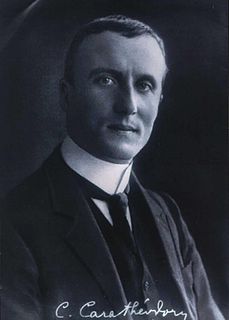 W
WConstantin Carathéodory was a Greek mathematician who spent most of his professional career in Germany. He made significant contributions to real and complex analysis, the calculus of variations, and measure theory. He also created an axiomatic formulation of thermodynamics.
 W
WLazare Nicolas Marguerite, Count Carnot was a French mathematician, physicist and politician. He was known as the "Organizer of Victory" in the French Revolutionary Wars and Napoleonic Wars.
 W
WSous-lieutenant Nicolas Léonard Sadi Carnot was a French mechanical engineer in the French Army, military scientist and physicist, often described as the "father of thermodynamics." Like Copernicus, he published only one book, the Reflections on the Motive Power of Fire, in which he expressed, at the age of 27 years, the first successful theory of the maximum efficiency of heat engines. In this work he laid the foundations of an entirely new discipline, thermodynamics. Carnot's work attracted little attention during his lifetime, but it was later used by Rudolf Clausius and Lord Kelvin to formalize the second law of thermodynamics and define the concept of entropy. His father used the suffix Sadi to name him because of his intense interest in the character of Saadi Shirazi, a well-known Iranian poet.
 W
WBenoît Paul Émile Clapeyron was a French engineer and physicist, one of the founders of thermodynamics.
 W
WRudolf Julius Emanuel Clausius was a German physicist and mathematician and is considered one of the central founders of the science of thermodynamics. By his restatement of Sadi Carnot's principle known as the Carnot cycle, he gave the theory of heat a truer and sounder basis. His most important paper, "On the Moving Force of Heat", published in 1850, first stated the basic ideas of the second law of thermodynamics. In 1865 he introduced the concept of entropy as a ratio of heat to temperature. In 1870 he introduced the virial theorem which applied to heat.
 W
WSebastian Deffner is a German theoretical physicist and a professor in the Department of Physics at the University of Maryland, Baltimore County (UMBC). He is known for his major contributions to the development of quantum thermodynamics with focus on the thermodynamics of quantum information, quantum speed limit for open systems, quantum control and shortcuts to adiabaticity. He is also the co-author, with Steve Campbell, of the textbook Quantum Thermodynamics: An introduction to the thermodynamics of quantum information, which is the first graduate level textbook in the field of quantum thermodynamics.
 W
WThéophile Ernest de Donder was a Belgian mathematician and physicist famous for his work in developing correlations between the Newtonian concept of chemical affinity and the Gibbsian concept of free energy.
 W
WPierre Maurice Marie Duhem was a French theoretical physicist who worked on thermodynamics, hydrodynamics, and the theory of elasticity. Duhem was also a historian of science, noted for his work on the European Middle Ages which is regarded as having created the field of the history of medieval science. As a philosopher of science, he is remembered principally for his views on the indeterminacy of experimental criteria.
 W
WHugh Everett III was an American physicist who first proposed the many-worlds interpretation (MWI) of quantum physics, which he termed his "relative state" formulation. In contrast to the then-dominant Copenhagen interpretation, the MWI posits that the Schrödinger equation never collapses and that all possibilities of a quantum superposition are objectively real.
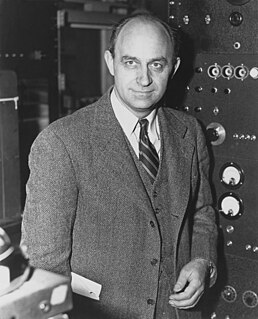 W
WEnrico Fermi was an Italian physicist and the creator of the world's first nuclear reactor, the Chicago Pile-1. He has been called the "architect of the nuclear age" and the "architect of the atomic bomb". He was one of very few physicists to excel in both theoretical physics and experimental physics. Fermi was awarded the 1938 Nobel Prize in Physics for his work on induced radioactivity by neutron bombardment and for the discovery of transuranium elements. With his colleagues, Fermi filed several patents related to the use of nuclear power, all of which were taken over by the US government. He made significant contributions to the development of statistical mechanics, quantum theory, and nuclear and particle physics.
 W
WJosiah Willard Gibbs was an American scientist who made significant theoretical contributions to physics, chemistry, and mathematics. His work on the applications of thermodynamics was instrumental in transforming physical chemistry into a rigorous inductive science. Together with James Clerk Maxwell and Ludwig Boltzmann, he created statistical mechanics, explaining the laws of thermodynamics as consequences of the statistical properties of ensembles of the possible states of a physical system composed of many particles. Gibbs also worked on the application of Maxwell's equations to problems in physical optics. As a mathematician, he invented modern vector calculus.
 W
WGeorge Nicholas Hatsopoulos was a Greek American mechanical engineer noted for his work in thermodynamics and for having co-founded Thermo Electron.
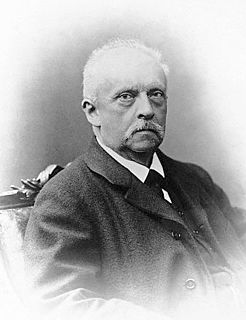 W
WHermann Ludwig Ferdinand von Helmholtz was a German physicist and physician who made significant contributions in several scientific fields. The largest German association of research institutions, the Helmholtz Association, is named after him.
 W
WSven Erik Jørgensen was an ecologist and chemist.
 W
WJames Prescott Joule was an English physicist, mathematician and brewer, born in Salford, Lancashire. Joule studied the nature of heat, and discovered its relationship to mechanical work. This led to the law of conservation of energy, which in turn led to the development of the first law of thermodynamics. The SI derived unit of energy, the joule, is named after him.
 W
WMilivoje Kostic, is a Serbian-American thermodynamicist and professor emeritus of mechanical engineering at Northern Illinois University, Licensed Professional Engineer (PE) in Illinois, and Editor-in-Chief of the Thermodynamics section of the journal Entropy. He is an expert in energy fundamentals and applications, including nanotechnology, with emphasis on efficiency, efficient energy use and energy conservation, and environment and sustainability.
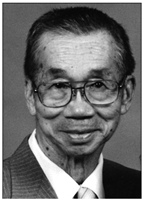 W
WJoseph Neng Shun Kwong was a chemical engineer, most famous for his role in the development of the Redlich–Kwong equation of state.
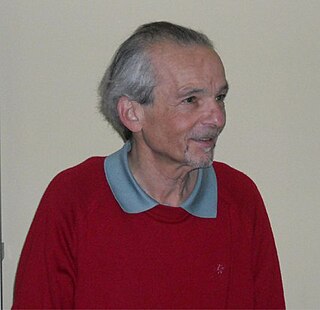 W
WBernard Howard Lavenda is a retired professor of chemical physics at the University of Camerino and expert on irreversible thermodynamics. He has contributed to many areas of physics, including that of Brownian motion, and in the establishment of the statistical basis of thermodynamics, and non-Euclidean geometrical theories of relativity. He was the scientific coordinator of the "European Thermodynamics Network" in the European Commission Program of Human Capital and Mobility. He was also a proponent for the establishment of, and scientific director of, a National (Italian) Centre for Thermodynamics, and has acted as scientific consultant to companies such as the ENI Group, where he helped to found TEMA, a consulting firm for SNAM Progetti, ENEA, and the Solar Energy Research Institute in Golden, Colorado. He has had over 130 scientific papers published in international journals, some critical of the new fashions and modes in theoretical physics.
 W
WJoel L. Lebowitz is a mathematical physicist widely acknowledged for his outstanding contributions to statistical physics, statistical mechanics and many other fields of Mathematics and Physics.
 W
WGilbert Newton Lewis was an American physical chemist and a former Dean of the College of Chemistry at University of California, Berkeley. Lewis was best known for his discovery of the covalent bond and his concept of electron pairs; his Lewis dot structures and other contributions to valence bond theory have shaped modern theories of chemical bonding. Lewis successfully contributed to chemical thermodynamics, photochemistry, and isotope separation, and is also known for his concept of acids and bases. Lewis also researched on relativity and quantum physics, and in 1926 he coined the term "photon" for the smallest unit of radiant energy.
 W
WJohn Henry Lienhard V is the Abdul Latif Jameel Professor of Water and Mechanical Engineering at the Massachusetts Institute of Technology. His research focuses on desalination, heat transfer, and thermodynamics. He has also written several engineering textbooks.
 W
WJames Clerk Maxwell was a Scottish scientist in the field of mathematical physics. His most notable achievement was to formulate the classical theory of electromagnetic radiation, bringing together for the first time electricity, magnetism, and light as different manifestations of the same phenomenon. Maxwell's equations for electromagnetism have been called the "second great unification in physics" where the first one had been realised by Isaac Newton.
 W
WWalther Hermann Nernst ForMemRS was a German chemist known for his work in thermodynamics, physical chemistry, electrochemistry, and solid state physics. His formulation of the Nernst heat theorem helped pave the way for the third law of thermodynamics, for which he won the 1920 Nobel Prize in Chemistry. He is also known for developing the Nernst equation in 1887.
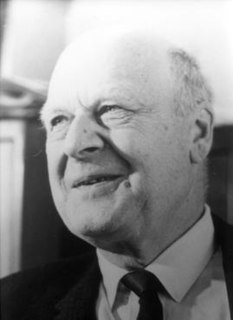 W
WLars Onsager was a Norwegian-born American physical chemist and theoretical physicist. He held the Gibbs Professorship of Theoretical Chemistry at Yale University. He was awarded the Nobel Prize in Chemistry in 1968.
 W
WWolfgang Ernst Pauli was an Austrian theoretical physicist and one of the pioneers of quantum physics. In 1945, after having been nominated by Albert Einstein, Pauli received the Nobel Prize in Physics for his "decisive contribution through his discovery of a new law of Nature, the exclusion principle or Pauli principle". The discovery involved spin theory, which is the basis of a theory of the structure of matter. He also showed a precocious ability for physics getting his PhD at age 21 even though he graduated high school at 18.
 W
WJules Henri Poincaré was a French mathematician, theoretical physicist, engineer, and philosopher of science. He is often described as a polymath, and in mathematics as "The Last Universalist", since he excelled in all fields of the discipline as it existed during his lifetime.
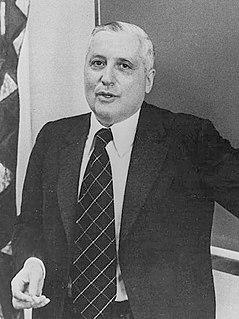 W
WViscount Ilya Romanovich Prigogine was a physical chemist and Nobel laureate noted for his work on dissipative structures, complex systems, and irreversibility.
 W
WWilliam John Macquorn Rankine was a Scottish mechanical engineer who also contributed to civil engineering, physics and mathematics. He was a founding contributor, with Rudolf Clausius and William Thomson, to the science of thermodynamics, particularly focusing on the first of the three thermodynamic laws. He developed the Rankine scale, an equivalent to the Kelvin scale of temperature, but in degrees Fahrenheit rather than Celsius.
 W
WHenri Victor Regnault was a French chemist and physicist best known for his careful measurements of the thermal properties of gases. He was an early thermodynamicist and was mentor to William Thomson in the late 1840s. He never used his first given name, and was known throughout his lifetime as Victor Regnault.
 W
WErwin Rudolf Josef Alexander Schrödinger, sometimes written as Erwin Schrodinger or Erwin Schroedinger, was a Nobel Prize-winning Austrian-Irish physicist who developed a number of fundamental results in quantum theory: the Schrödinger equation provides a way to calculate the wave function of a system and how it changes dynamically in time.
 W
WPeter Guthrie Tait FRSE was a Scottish mathematical physicist and early pioneer in thermodynamics. He is best known for the mathematical physics textbook Treatise on Natural Philosophy, which he co-wrote with Kelvin, and his early investigations into knot theory.
 W
WJohannes Diderik van der Waals was a Dutch theoretical physicist and thermodynamicist famous for his pioneering work on the equation of state for gases and liquids. Van der Waals started his career as a school teacher. He became the first physics professor of the University of Amsterdam when in 1877 the old Athenaeum was upgraded to Municipal University. Van der Waals won the 1910 Nobel Prize in physics for his work on the equation of state for gases and liquids.
 W
WYuwen Zhang is a Chinese-American professor of mechanical engineering who has made contributions to multiphase heat transfer and flow. He is a Curators' Distinguished Professor in the Department of Mechanical and Aerospace Engineering at the University of Missouri in Columbia, Missouri.